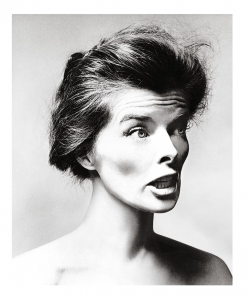By Maggie Pool

-Katharine Hepburn
Hollywood Actress, Katharine Hepburn will always be remembered for her fierce and fiery performances in film. After all, she still holds the record for the most Academy Awards (in either gender) for acting*. However, Hepburn is not solely known for her ability to perform. She curated what is considered the “modern woman” of the 20th century by separating herself from several of society’s conformities, like evading the Hollywood publicity machine, wearing trousers before it was fashionable or acceptable for women, and living independently for the rest of her life after being married for six years.
Hepburn was born in Hartford, Connecticut in 1907 to Thomas Norval Hepburn and Katharine Martha Houghton. Her famous rebellious spirit was inevitable. Her father established the New England Social Hygiene Association, which worked to enlighten the public on venereal disease while her mother advocated for women’s rights. Hepburn joined her mother for many women’s suffrage demonstrations, and for a time, dressed as a tomboy, cut her hair short, and called herself “Jimmy.” From a young age, Hepburn frequented the movies every Saturday night and put on plays for her neighbors, friends, and siblings for 50 cents a ticket**. Katharine continued acting in college and found success on Broadway. Raving reviews led to her led to her recognition in Hollywood. When Katharine hit the big screen, she didn’t shed her revolutionary values to please anybody. She remained uninterested in publicity (for most of her life). On one occasion, she snatched a camera out of a reporter’s hand for taking pictures without permission.
Her never-ending aggressive energy wasn’t subverted when it came to the standards of women’s fashion. In the 1930s, women’s fashion had not felt the effects of World War II. It was still possible for a woman to be arrested and detained on the charge of “masquerading as men” if they were caught wearing slacks in public. In an attempt to force Hepburn to wear a skirt, RKO Pictures stole her blue jeans from her dressing room while she was on set. However, instead of succumbing, Hepburn paraded around in her underwear. Her jeans were soon returned. She went on to star in, Christopher Strong (1933), The Philadelphia Story (1939), Women of the Year (1942), and Adam’s Rib (1949).
Despite the backlash and oppression Hepburn faced, she lived out her beliefs never altering to conformity. To this day, she is an important cultural icon of American history who continues to influence and empower women.
Many paid tribute to Hepburn when the actress passed away in 2003:
“Confident, intelligent and witty, four-time Oscar winner Katharine Hepburn defied convention throughout her professional and personal life … Hepburn provided an image of an assertive woman whom [females] could watch and learn from.” – Horton and Simmons
“What she brought us was a new kind of heroin—modern and independent. She was beautiful, but she did not rely on that.” – Jeanine Basinger